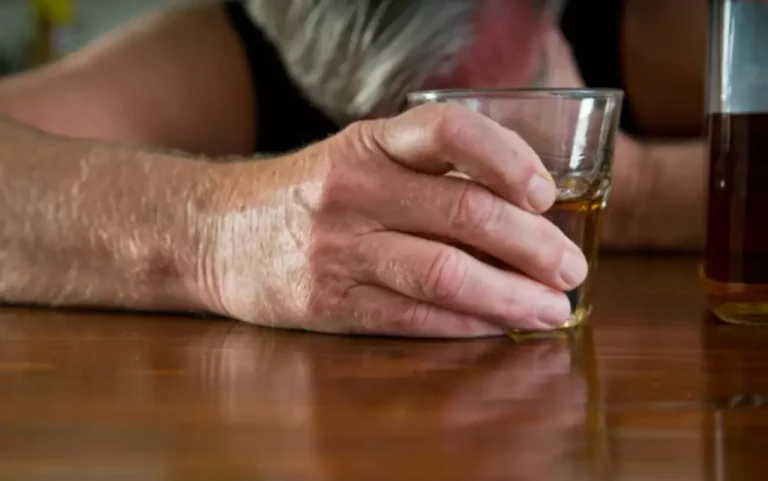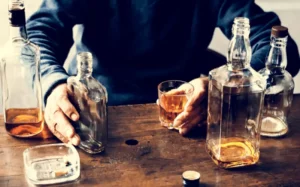
Heavy alcohol consumption increases ROS production and may be a mechanism of pancreatic β-cells dysfunction in T2DM. The reason is that ROS production is one of the earliest events in glucose intolerance, through mitochondrial dysfunction. Previous studies of alcohol dependence have shown that alcohol elevated the level of β-cell apoptosis and increased insulin resistance in the liver and skeletal muscle, which is among the earliest detectable alterations in humans with T2DM [20]. These studies demonstrated the diabetes-related lipid abnormalities, by insulin sensitivity, mediated oxidative stress and the altered metabolism has been shown to have a deleterious effects after heavy drinking, an effect mediated by insulin. The hormone insulin, which is produced in the pancreas, is an important regulator of blood sugar levels.
ALCOHOL CONSUMPTION AND RISK OF T2DM
- The ADA does not forbid a person with diabetes from consuming alcohol, but they do not advise it either.
- Similarly, no change in the plasma insulin concentration was reported in chronic alcohol-fed rats [14,57], which is consistent with the lack of a significant change in pancreatic insulin content [89].
- Some people who take oral diabetes medicines should talk with their provider to see if it is safe to drink alcohol.
- Reduction of LDL cholesterol decreases a person’s likelihood of suffering a heart attack or stroke.
Additionally, alcohol has been reported to effect hepatic glycolytic and gluconeogenic enzyme activities including a reduction in phosphofructokinase [41]. The resulting alcohol-induced decrease in pyruvate lowers pyruvate carboxylase, the rate limiting gluconeogenic enzyme, thereby contributing to the decrease in hepatic glucose output [38]. Aside from these changes, however, reports are inconsistent and contradictory regarding the effects of alcohol on glycolytic and gluconeogenic enzymes [33,38,42]. In vivo determination of transhepatic glucose flux in 48–72 h fasted dogs, with essentially no glycogen reserves, indicates acute alcohol markedly impairs gluconeogenesis [31]. Alcohol also dose-dependently inhibits lactate-stimulated gluconeogenesis when given acutely in the in situ perfused liver [32] and when added to isolated hepatocytes [33]. Collectively, these data are consistent with those from in vivo studies showing acute alcohol decreases whole-body estimates of glucose recycling (e.g., glucose → lactate → glucose) and lactate turnover [27].
Sex-Specific Data (Never-Drinking Studies Only)

Data were stratified on each appropriate factor, with differences explored visually after adjustment for the effect of sex and reference group. Drinking alcohol carries the same health risks for people with diabetes as it does in otherwise healthy people. But there are certain risks related to having diabetes that are important to know. Have a snack or meal as you sip or immediately beforehand to lower the risk of hypoglycemia.
Impact of Alcohol on Insulin Action
To help keep health risks from alcohol at a low level, it’s safest not to regularly drink more than 14 units a week. The guidelines also recommend that if you choose to drink up to 14 units a week, spread this over at least three days. Given the data indicating decreased BDNF in alcoholism, there has been considerable interest in the possibility that chronic alcohol ingestion may impart its negative effects on T2DM, through its effects on BDNF. BDNF, a member of the neurotrophin family, mediated through a specific Trk family receptor tyrosine kinase B (Trk A, Trk B, and Trk C), is abundantly expressed in central and peripheral nervous system [39]. BDNF have received attention, regarding a possible role in regulating neuronal survival, differentiation, synaptic plasticity, cognitive function and memory.
Diabetes causes lower-than-normal production or function of insulin — the hormone that helps control your blood sugar levels — so blood sugar management is important (1). Vomiting can lead to either low blood sugars (if you puked food that you’ve taken insulin for) or potentially diabetic ketoacidosis (DKA)—even if your blood sugar levels are normal. This is why it’s especially important for your friends and family to know the risks of drinking alcohol with diabetes and the signs of low blood sugar. Your liver is releasing this stored glucose every day and night to give your brain and body the fuel it needs to function.
- Alcohol metabolism in the liver, however, actually shuts down the process of gluconeogenesis and thus the second line of defense against hypoglycemia.
- The resulting alcohol-induced decrease in pyruvate lowers pyruvate carboxylase, the rate limiting gluconeogenic enzyme, thereby contributing to the decrease in hepatic glucose output [38].
- Basal glycogen content in skeletal muscle has most often been reported to be unaltered by chronic alcohol ingestion [62,63], but some studies have shown elevated glycogen content [64] in the absence of overt symptoms of alcoholic myopathy.
- However, no sex-specific differences were identified in the average number of covariates adjusted for among selected studies.
- For example, neither a single oral dose of alcohol [93] nor a 4 h intravenous infusion altered plasma insulin concentrations determined 12 h later.
- Alcoholic patients with T2DM have repeatedly been found to have deregulation of the ghrelin and leptin systems, as indicated by impaired insulin secretion, increased hepatic glucose production and decreased peripheral glucose utilization.
The morning after you’ve been drinking

With 4.6 grams of carbs per 12-ounce (360-mL) serving, it provides roughly 50% fewer carbs than a regular Budweiser (11, 12). Bud Lite is another low carb beer that provides fewer than 5 grams of carbs per serving. The funders had no role in study design, data collection or analysis, decision to publish, or preparation of the manuscript. The views expressed are those of the authors and not necessarily those of the funders. Upon identifying a single study that contributed a substantial proportion of sampled data, an a posteriori sensitivity analysis was undertaken.
2. Whole-Body Basal Glucose Flux
The nerves that control erection are part of the autonomic nervous system, which controls numerous vital processes that occur without conscious efforts (e.g., breathing and the contractions of the gut necessary for proper digestion). Tomato juice in a Bloody Mary provides lycopene, a pigment in tomatoes that has antioxidant and anti-diabetes properties and may protect people with diabetes from heart disease (29, 30, 31). Aside from having a low carb content, red wine may lower the risk of diabetes-related complications if consumed in moderation. White wines, especially some types of Champagne, also generally have a low carb count. Busch beers are good alternatives for people with diabetes due to the low carb content of most of the brand’s products — including their beers that are not branded as low carb.
- Talk to your doctor about your drinking habits and they can provide you with tips and tricks for how drink in a way that works for you.
- This conversation starts with simply being honest about the amount of alcohol you drink daily.
- While some of the divergent results may stem from species differences (rat/mice vs. humans), there is also discordant results from studies within the same species.
- Different drinks vary in alcohol, carb, and sugar content and in how they affect a person’s blood sugar levels.
Detailed analyses demonstrated that although the glucagon and epinephrine responses to hypoglycemia were unaffected, the growth hormone and cortisol responses were reduced after alcohol consumption. Two additional medications—metformin and troglitazone—are now being used to treat people with type 2 diabetes. These agents act to lower the patient’s blood sugar levels by decreasing insulin resistance rather than by increasing diabetes and alcohol insulin secretion. Accordingly, these medications help control blood sugar levels without causing hypoglycemia. Insulin resistance does not immediately lead to overt diabetes, because the patient’s pancreatic beta cells initially can increase their insulin production enough to compensate for the insulin resistance. In fact, insulin-resistant people have higher than normal insulin levels (i.e., are hyperinsulinemic1).
Some research notes that while moderate alcohol consumption may not pose significant risks for everyone, it can affect blood sugar levels and overall metabolic health, which is particularly important for individuals managing type 2 diabetes. Alcohol can lead to fluctuations in blood glucose, potentially causing hypoglycemia (low blood sugar) or hyperglycemia (high blood sugar), https://ecosoberhouse.com/ especially when combined with other diabetes medications. Therefore, individuals on semaglutide should be cautious and monitor their blood sugar levels closely if they choose to consume alcohol. Furthermore, acute alcohol administration [98] and long-term ingestion of moderate doses of alcohol consumption [113] have been infrequently reported to reduce insulin secretion.
